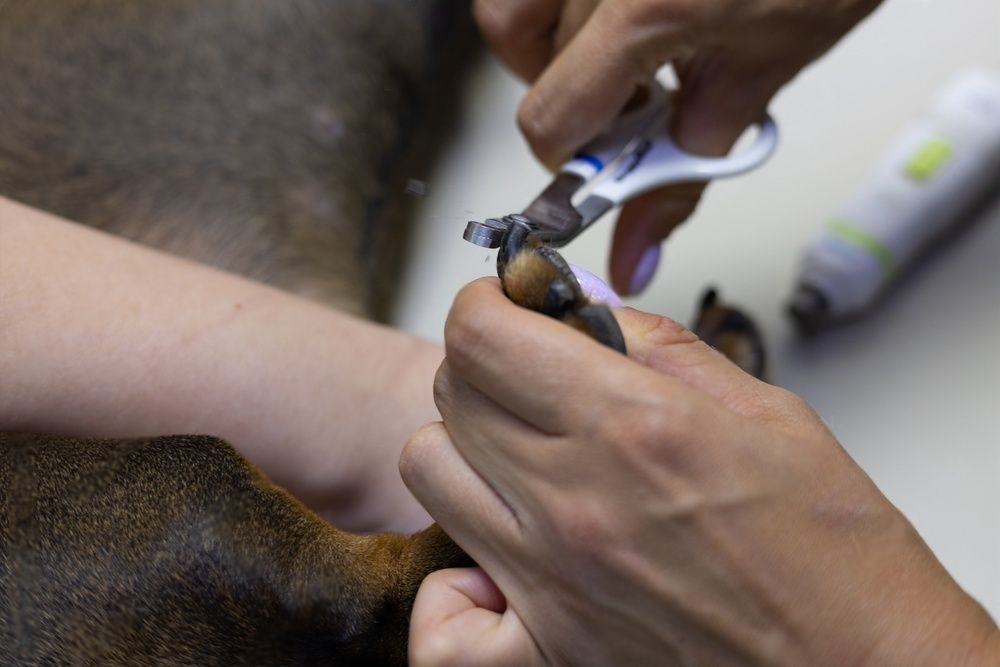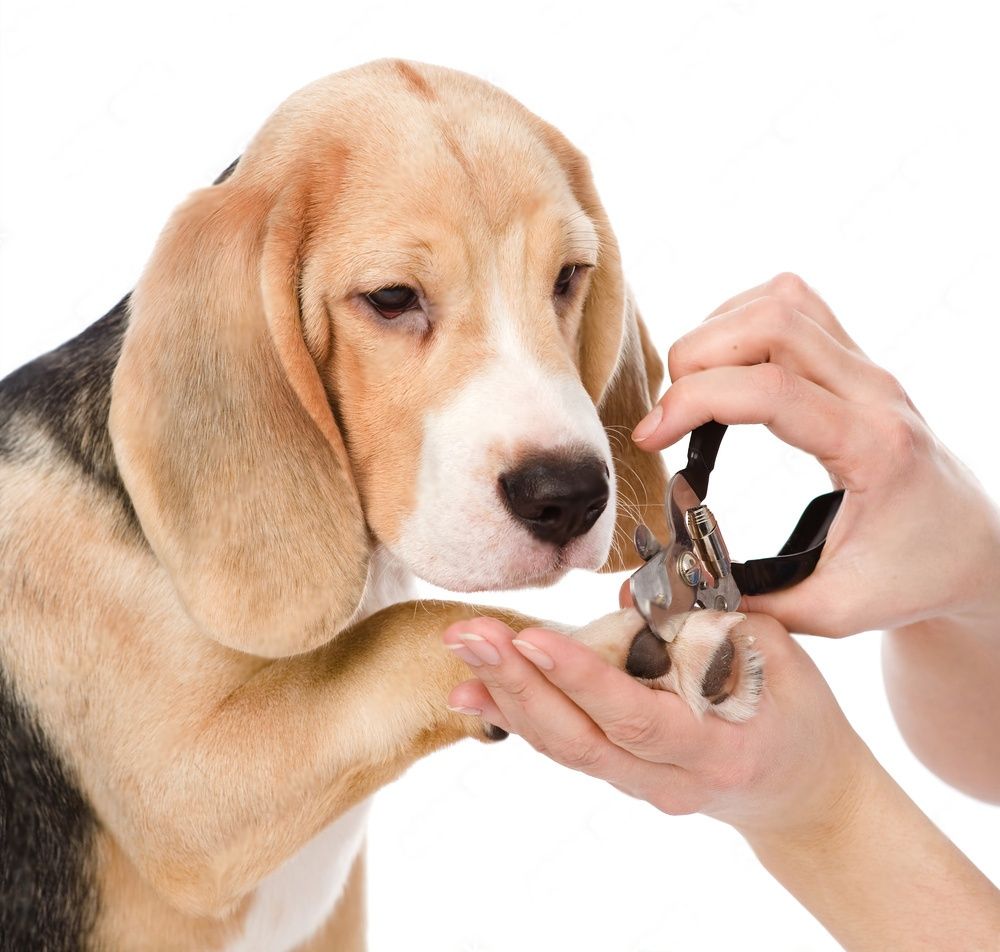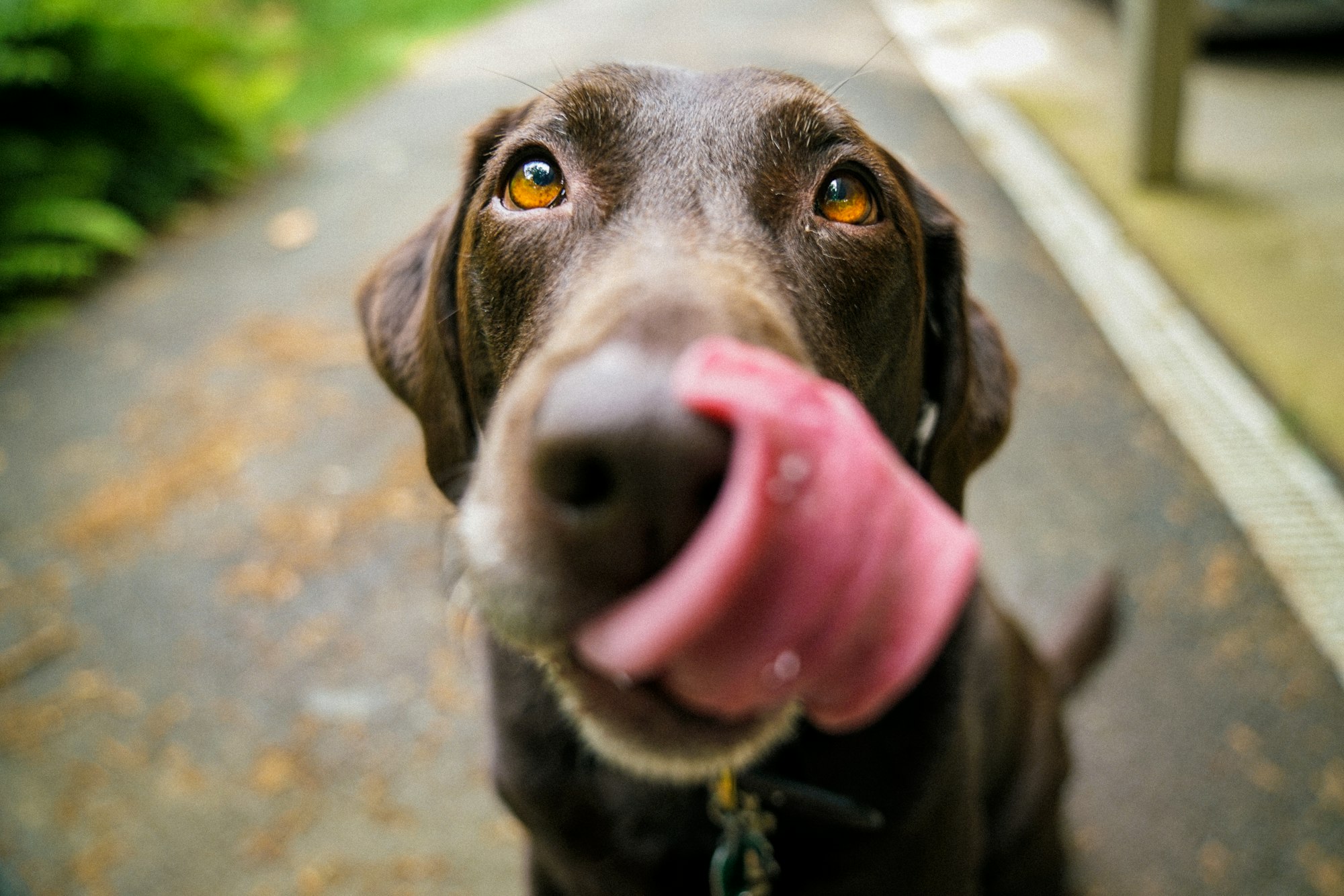
Having a furry companion brings immense joy and responsibility. One crucial aspect of dog care is nail trimming. Dogs' nails, just like our own, require regular maintenance to keep them at an appropriate length. Here, we will explore the significance of regular nail trimming for dogs, including the importance of maintaining optimal nail length, how often you should trim your dog's nails, and how it contributes to their overall well-being.
Importance of Regular Nail Trimming
Regular nail trimming is crucial for the overall health and well-being of dogs. When left untrimmed, a dog's nails can become too long and cause discomfort and pain. Overgrown nails can affect their posture and movement, leading to changes in gait and potential joint problems. Furthermore, excessively long nails can cause injury to the nail bed, leading to bleeding, infections, and difficulty in walking.
Signs that Indicate the Need for Nail Trimming
It's essential to recognize the signs that indicate when it's time to trim your dog's nails. One common sign is the clicking sound their nails make when walking on hard surfaces. If you notice your dog's nails are long enough to touch the ground, it's a clear indication that they need a trim. Another sign to look out for is limping or discomfort when walking, which can be caused by nails that have become too long and are putting pressure on the paw pads or causing the nails to curl.
Regularly examining your dog's nails will help you identify if they are due for a trim. Ideally, the nails should not touch the ground when your dog is standing upright. If you're unsure, consult your veterinarian or a professional dog groomer for guidance on the appropriate length for your dog's nails.
By being proactive and trimming your dog's nails regularly, you can ensure their comfort, prevent potential injuries, and promote their overall mobility and well-being.
How Often Should You Trim Your Dog's Nails?
The frequency of nail trimming for dogs depends on various factors, including the breed, size, activity level, and the dog's nail growth rate. In general, most dogs require nail trimming every 2-4 weeks to maintain optimal nail length. However, it's essential to consider the specific needs of your dog to determine the ideal trimming schedule.
Some dogs naturally wear down their nails through regular exercise on different surfaces, which may result in slower nail growth. On the other hand, certain breeds or individual dogs may have faster nail growth, requiring more frequent trims. Additionally, dogs with long nails that curl or touch the ground will need more frequent nail trims to prevent discomfort and potential injuries.
Regularly observing your dog's nails and monitoring their length is key to determining when they need trimming. If you hear the nails clicking on the floor or notice that the nails are visibly long, it's a good indication that it's time for a trim.
Factors to Consider
When determining how often to trim your dog's nails, several factors come into play:
· Breed and Size: Different breeds have varying nail growth rates. Larger dogs often have thicker nails that grow slower, while smaller breeds may have faster-growing nails.
· Activity Level: Dogs that are highly active and spend a lot of time outdoors on abrasive surfaces may naturally wear down their nails, requiring less frequent trims. In contrast, less active dogs may require more regular trimming.
· Nail Wear: The wear pattern of your dog's nails can provide insights into their trimming needs. Dogs that naturally wear down their nails through regular exercise may need less frequent trims compared to those with minimal wear.
· Individual Variation: Each dog is unique, and their nail growth rate can vary even within the same breed. Pay attention to your dog's particular nail growth patterns and adjust the trimming schedule accordingly.
The Consequences of Infrequent Nail Trimming
Neglecting regular nail trimming can lead to several consequences for your dog's health and well-being. Overgrown nails can cause discomfort and pain, making it challenging for dogs to walk properly and maintain a normal gait. This can result in abnormal posture and put additional stress on their joints, potentially leading to musculoskeletal issues.

In severe cases, overgrown nails can curl and grow into the paw pads, causing pain, infections, and difficulty in walking. Additionally, long nails can get caught in fabrics, carpets, or other surfaces, leading to injury or tearing of the nails.
Infrequent nail trimming can also affect your dog's behavior. Dogs with discomfort or pain from overgrown nails may become irritable, anxious, or exhibit aggressive behaviors. They may develop a fear or aversion to nail trimming, making future sessions more challenging.
The Right Way to Trim Your Dog's Nails
Trimming your dog's nails requires proper technique and caution to ensure a safe and comfortable experience for you and your furry friend. Here are the steps to follow for a successful nail-trimming session:
1. Choose the Right Tools: Use specialized dog nail clippers or grinders that are designed for safe and effective nail trimming. Avoid using human nail clippers, as they may not provide the necessary precision.
2. Find a Calm Environment: Select a quiet, well-lit area where you and your dog can be comfortable during the nail trimming session. Minimize distractions to help keep your dog relaxed.
3. Get Your Dog Acquainted: Familiarize your dog with the nail trimming tools before starting. Let them sniff and examine the clippers or grinder to alleviate any anxiety.
4. Gently Hold Your Dog's Paw: Gently hold your dog's paw and apply light pressure to extend the nails. Be cautious not to squeeze too tightly, as it may cause discomfort or stress.
5. Identify the Quick: The quick is the sensitive part of the nail that contains blood vessels. It appears as a pink area inside light-colored nails or as a darker line within dark-colored nails. Avoid cutting into the quick, as it can cause bleeding and pain.
6. Trim Gradually: Trim a small portion of the nail at a time to minimize the risk of cutting into the quick. If your dog has long nails, trim them gradually over multiple sessions to allow the quick to recede.
7. Monitor the Nail Length: Frequently check the nail length while trimming to ensure you achieve the desired length without causing any discomfort. Stop trimming if you see a pale oval area (the beginning of the quick) in light-colored nails or a slight change in color in dark-colored nails.
8. File Smooth Edges: After trimming, use a nail file or a grinder to smooth any rough edges on the nails. This helps prevent snagging and minimizes discomfort for your dog.
Remember, patience and a calm demeanor are essential during the nail-trimming process. If your dog becomes stressed or anxious, take breaks and provide positive reinforcement such as treats or praise to keep the experience positive.
Tools and Techniques for Nail Trimming
When it comes to nail trimming, having the right tools and employing suitable techniques can make the process easier and safer. Here are some tools and techniques to consider:
· Nail Clippers: Choose between guillotine-style clippers, scissor-style clippers, or plier-style clippers based on your preference and your dog's nail size and thickness. Ensure the clippers are sharp to make clean cuts.
· Nail Grinders: Nail grinders are electric or battery-operated tools that file down the nails gradually. They offer precision and can help smooth the edges. Introduce your dog to the grinder gradually to accustom them to the sound and sensation.
· Styptic Powder or Gel: Keep styptic powder or gel on hand to stop bleeding in case you accidentally cut the quick. Apply a small amount to the nail tip if bleeding occurs, and apply gentle pressure.
· Proper Technique: Hold your dog's paw firmly but gently. Locate the position of the quick before trimming, and avoid cutting too close to it. Trim small amounts at a time to minimize the risk of cutting into the quick.
Choose the tools that you feel most comfortable using and that work best for your dog's nail type and size. Remember to keep the tools clean and sanitized to prevent the spread of bacteria or infections.

Tips for a Stress-Free Nail Trimming Session
Nail trimming can be a challenging task, especially if your dog is anxious or fearful. However, with the right approach, you can help create a stress-free environment. Here are some tips to make nail trimming sessions more comfortable for your dog:
1. Desensitization Exercises: Gradually introduce your dog to nail trimming by touching their paws and nails regularly. Pair each touch with positive reinforcement, such as treats or praise, to associate the experience with something pleasant.
2. Positive Reinforcement: Use positive reinforcement techniques throughout the process. Offer treats, praise, or favorite puzzle toys as rewards for calm behavior and cooperation. This helps your dog associate nail trimming with positive outcomes.
3. Take It Slow: Start with short nail trimming sessions and gradually increase the duration as your dog becomes more comfortable. Patience is key to ensuring a positive experience for your dog.
4. Consider Professional Help: If your dog has severe anxiety or fear associated with nail trimming, consult a professional dog groomer or a veterinarian who can provide guidance and support. They may be able to offer techniques or sedation options to ease the process.
5. Maintain a Calm Atmosphere: Create a calm and relaxed environment during nail trimming sessions. Play soothing music, use aromatherapy, or engage in gentle massage therapy before and during the process to help your dog stay relaxed.
By implementing these tips, you can make nail trimming sessions less stressful for you and your dog, ensuring a more positive experience and maintaining their nail health effectively.
Understanding the Anatomy of a Dog's Nail
To effectively trim your dog's nails, it's crucial to understand the anatomy of a dog's nails. Here are the key components:
· Nail Bed: The nail bed is the soft tissue underneath the nail. It contains blood vessels and nerve endings. It's essential to avoid cutting into the nail bed to prevent bleeding and discomfort.
· Quick: The quick is a pinkish area within light-colored nails or a darker line within dark-colored nails. It contains blood vessels and nerve endings. Cutting into the quick can cause bleeding and pain. Regular trimming can help recede the quick over time.
· Nail Outer Layer: The outer layer of the nail is composed of keratin, the same material found in human nails. It's important to trim this outer layer to maintain optimal nail length.
By understanding the anatomy of a dog's nails, you can trim the nails safely and efficiently while minimizing the risk of discomfort or injury.
Common Mistakes to Avoid
While trimming your dog's nails, it's required to be aware of common mistakes to avoid:
· Cutting into the Quick: Accidentally cutting into the quick can cause bleeding and pain. To avoid this, trim small amounts at a time and observe the quick's position within the nail.
· Using Dull Tools: Dull clippers or grinders can crush or split the nail instead of providing a clean cut. Ensure your tools are sharp to achieve precise cuts.
· Neglecting Regular Trims: Infrequent nail trimming can lead to overgrowth and discomfort for your dog. Maintain a regular trimming schedule to prevent nails from becoming too long.
· Rushing the Process: Rushing through the nail trimming process can result in uneven or jagged cuts. Take your time and be patient to ensure a smooth and comfortable experience for your dog.
By avoiding these common mistakes, you can improve the nail-trimming process and minimize any potential negative effects on your dog's nails.

Professional Nail Trimming vs. DIY
Deciding between professional nail trimming and DIY trimming depends on various factors, including your comfort level, your dog's behavior, and the specific needs of your dog. Consider the following:
· Professional Nail Trimming: Professional groomers or veterinarians have experience and expertise in nail trimming. They can handle difficult dogs or dogs with anxiety more effectively. Professional nail trimming may be recommended if you are unsure or uncomfortable with the process or if your dog has specific needs.
· DIY Nail Trimming: Trimming your dog's nails at home can be a cost-effective and convenient option, especially for dogs who are comfortable with the process. DIY trimming allows you to monitor your dog's nails regularly and make adjustments as needed. It also helps in maintaining a bond with your pet through regular handling.
Pick the option that works best for you and your dog's individual needs, keeping in mind the importance of regular nail care for their overall well-being.
When to Seek Veterinary Assistance
While most dogs can benefit from regular nail trimming at home, there are instances when veterinary assistance is recommended:
· Fear or Aggression: If your dog exhibits extreme fear, anxiety, or aggression during nail trimming, seeking veterinary assistance can ensure the safety of both you and your pet. A veterinarian can provide sedation or other techniques to make the process more manageable.
· Abnormal Nail Growth or Condition: If you notice any abnormalities in your dog's nails, such as excessive thickness, deformities, or signs of infection, it's essential to consult a veterinarian. These conditions may require specialized care or treatment.
· Injury or Bleeding: If you accidentally cut into the quick and your dog experiences bleeding that doesn't stop with gentle pressure, seek veterinary assistance to address the bleeding and prevent any potential complications.
A veterinarian can provide expert advice and assistance for nail trimming if you encounter any challenges or have concerns about your dog's nail health.
How to Maintain Your Dog's Nail Health
In addition to regular nail trimming, there are other steps you can take to maintain your dog's nail health:
· Regular Exercise: Providing regular exercise on different surfaces can help naturally wear down your dog's nails. This can reduce the frequency of nail trims and promote overall nail health.
· Proper Nutrition: A balanced diet rich in essential nutrients can contribute to healthy nail growth. Consult with your veterinarian to ensure your dog's diet supports optimal nail health.
· Check for Abnormalities: Regularly inspect your dog's nails for any signs of abnormalities, such as cracks, splits, or infections. Address any concerns promptly by seeking veterinary advice.
· Maintain a Stress-Free Environment: Create a calm and relaxed environment during nail trimming sessions to minimize stress for your dog. Positive reinforcement, treats, and praise can help make the experience more enjoyable.
Conclusion
Summarize the key points covered in the article, emphasizing the importance of regular nail trimming for a dog's well-being. Reinforce the message that maintaining proper nail length is a vital aspect of responsible pet ownership.
Frequently Asked Questions (FAQs)
1. Q: How do I know if my dog's nails are too long?
A: Look out for signs like nail clicking, limping, or changes in gait. Overgrown nails can also curl or cause discomfort.
2. Q: Can I use regular human nail clippers for my dog?
A: It is recommended to use specially designed dog nail clippers or grinders to ensure a safe and effective trim.
3. Q: What if I accidentally cut the quick while trimming my dog's nails?
A: Apply styptic powder or cornstarch to stop bleeding and consult your veterinarian if the bleeding persists or the nail becomes infected.
4. Q: My dog is fearful of nail trimming. What should I do?
A: Gradual desensitization, positive reinforcement, and seeking professional help can help alleviate your dog's fear and make the process more comfortable.
5. Q: Can I file my dog's nails instead of trimming them?
A: While filing can be an alternative to trimming, it may take longer to achieve the desired nail length and can be challenging for dogs with thick nails.






